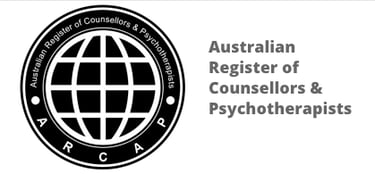Neurodivergent-Affirming Therapy: Understanding Its Importance for ADHD and Autism
AUTISMTEENSCOUNSELLING ADHDSCHOOL


Introduction to Neurodivergent-Affirming Therapy
Neurodivergent-affirming therapy is an approach tailored to the unique needs of individuals who are neurodivergent, including those diagnosed with Attention Deficit Hyperactivity Disorder (ADHD) and Autism Spectrum Disorder (ASD). Unlike traditional therapeutic methods that often seek to “normalize” individuals by focusing on conformity and behavior modification, neurodivergent-affirming therapy celebrates and validates the inherent diversity of neurological functioning. This paradigm shift emphasizes the strengths and challenges of neurodivergent individuals rather than viewing them through a deficit lens.
The term neurodivergence refers to variations in the human brain and nervous system, which manifest in diverse cognitive, emotional, and behavioral patterns. Individuals with ADHD may experience difficulties in maintaining attention and controlling impulses, while those on the autism spectrum often exhibit differences in social communication and sensory processing. Recognizing the value of these differences is fundamental to neurodivergent-affirming therapy, as it promotes self-acceptance and encourages individuals to leverage their unique traits as strengths.
This type of therapy is vital for individuals with ADHD and autism because it fosters an environment where their experiences are understood and valued. Such an affirming approach reduces the risk of stigma and internalized shame commonly associated with traditional therapies that prioritize compliance over individuality. By centering the client’s perspective, practitioners can create customized interventions that resonate with the individual’s lived experience, ultimately enhancing therapeutic outcomes and overall well-being. A comprehension of the principles underpinning neurodivergent-affirming therapy aids practitioners and individuals alike in embracing the rich tapestry of human neurological diversity.
The Concept of Neurodiversity
The concept of neurodiversity emerged in the late 20th century as a reaction to traditional views on neurological differences, particularly regarding conditions such as autism and attention deficit hyperactivity disorder (ADHD). The neurodiversity movement advocates for recognizing these variations as part of the natural diversity of human experience rather than as deficiencies or disorders requiring correction. At its core, neurodiversity emphasizes that neurological differences should be celebrated and understood as integral aspects of human identity.
A historical perspective reveals that the neurodiversity movement gained momentum during the 1990s, driven by advocates and individuals with lived experiences of neurodivergent conditions. These advocates argued against the medical model of disability, which often portrays neurological differences as problems needing treatment. Instead, they proposed a social model, asserting that society should adapt to accommodate these differences rather than expecting individuals to conform to a neurotypical standard. This shift in viewpoint has influenced how we understand and approach ADHD and autism within therapeutic settings.
Central to the neurodiversity framework are the principles of acceptance and respect for diverse neurological conditions. This perspective asserts that differences in cognition, sensory processing, and social interaction should not be pathologized but instead recognized as valid variations of human experience. By viewing neurodivergence through this lens, it fosters greater understanding and acceptance, which are pivotal in creating inclusive communities. Moreover, it encourages individuals who identify as neurodivergent to embrace their identities fully, fostering a sense of pride rather than shame associated with their neurological differences.
The neurodiversity movement has sparked important discussions about the implications of labeling and the societal perceptions of conditions like ADHD and autism. As we continue to explore the importance of neurodivergent-affirming therapy, understanding the foundational concepts of neurodiversity will provide deeper insights into the benefits of this inclusive and affirming approach.
Pathologising Neurodivergent Traits in Traditional Therapy
Traditional therapeutic approaches often emphasize a model of pathology that seeks to 'fix' or 'ameliorate' neurodivergent traits. This perspective can lead to significant pitfalls for individuals diagnosed with ADHD and autism. Rather than embracing these neurological variations as legitimate aspects of human diversity, conventional methodologies frequently classify them as deficits that necessitate correction. Such an inclination not only overlooks the unique strengths and perspectives that neurodivergent individuals can contribute but also fosters a sense of inadequacy and stigma among those affected.
The underlying framework of pathologizing neurodivergence can manifest in various ways, including a focus on behavioral modifications to promote conformity to societal norms. Traditional therapy may involve implementing standardized techniques aimed at mitigating ADHD symptoms such as impulsivity or hyperactivity, or reducing the characteristic social difficulties associated with autism. Consequently, individuals often find themselves pressured to abandon their inherent identities to meet externally defined expectations of 'normalcy.' This pressure can be detrimental to their self-esteem and overall well-being.
Moreover, when neurodivergent traits are viewed purely through a pathological lens, it perpetuates a narrative that contributes to societal stigma. Individuals might internalize negative messages suggesting that their ways of thinking and behaving are inherently flawed. This can lead to feelings of isolation and self-doubt, thus exacerbating mental health issues rather than alleviating them. The one-size-fits-all approach often adopted in traditional therapeutic settings overlooks the fundamental principle of individuality that is crucial for effective mental health care. Instead, it is essential to develop a therapeutic framework that recognizes and celebrates neurodivergent attributes as valid expressions of human diversity, providing support that promotes acceptance and growth.
Principles of Affirming Therapy
Neurodivergent-affirming therapy is grounded in principles that deeply respect and validate the experiences of individuals with ADHD and autism. This therapeutic approach focuses on the belief that neurodivergent identities should be celebrated rather than viewed through a lens of deficiency. One of the fundamental tenets is the affirmation of identity, which entails recognizing and embedding the unique characteristics of neurodivergent individuals in therapeutic conversations. This principle ensures that individuals feel seen and understood, propelling a framework where self-acceptance can flourish.
Additionally, the therapy emphasizes the importance of strengths over weaknesses. Rather than concentrating on the challenges associated with ADHD or autism, practitioners who employ this approach highlight the inherent talents and abilities that neurodivergent individuals possess. This strengths-based perspective encourages clients to explore their unique skills and talents, thereby instilling a sense of empowerment and motivation. Instead of framing symptoms as deficits that require management, therapists encourage individuals to acknowledge and build upon their cognitive and creative strengths.
Moreover, neurodivergent-affirming therapy fosters an environment of respect and collaboration between therapist and client. Techniques often employed include active listening, open-ended questioning, and reflective feedback. Such methods aim to create a space where clients feel comfortable sharing their thoughts and feelings without fear of judgment. This genuine collaboration is crucial in developing personalized strategies that cater to the unique needs of individuals with ADHD and autism.
In essence, the principles of neurodivergent-affirming therapy not only promote self-acceptance and strength recognition but also establish a supportive framework for meaningful growth. By focusing on the distinct experiences of neurodivergent individuals, this therapy model seeks to transform their narratives into empowering stories of resilience and celebration.
Benefits of Affirming Therapy for ADHD and Autism
Neurodivergent-affirming therapy offers a range of significant benefits for individuals diagnosed with ADHD and autism. One of the primary advantages is the enhancement of self-esteem. By validating the unique experiences and perspectives of neurodivergent individuals, therapy helps diminish feelings of inadequacy often fostered by societal stigmas. This affirmation allows clients to embrace their identities, improving their overall confidence and self-acceptance.
Furthermore, affirming therapy enhances emotional regulation, a crucial aspect for those with ADHD and autism. Through tailored interventions that respect the neurodivergent brain's functionality, clients learn effective coping strategies and emotional management techniques. This therapeutic approach empowers individuals to understand their emotions better, leading to healthier responses to stressors and potential triggers, ultimately resulting in increased emotional stability.
Interpersonal relationships are another area that benefits significantly from neurodivergent-affirming therapy. By promoting effective communication strategies and social skills tailored to the individual’s unique attributes, therapy cultivates healthier relationships with family, friends, and peers. Clients are encouraged to engage in meaningful self-expression, fostering connections built on understanding and shared experiences. This holistic approach not only enhances the quality of existing relationships but also opens avenues for new social interactions.
Finally, the overall mental health outcomes of individuals participating in affirming therapy tend to be positive. By focusing on strengths rather than deficits, clients are less likely to experience anxiety or depression, which can accompany the challenges of ADHD and autism. The emphasis on acceptance and self-awareness paves the way for a more fulfilling and balanced life, improving overall well-being.
How to Find a Neurodivergent-Affirming Therapist
Finding a neurodivergent-affirming therapist is a crucial step for individuals with ADHD and autism seeking supportive and effective therapy. The distinctive needs of neurodivergent individuals necessitate a specialized approach, and with the right strategies, one can identify a qualified therapist who aligns with these principles. Here are some practical steps to facilitate your search.
First and foremost, consider the therapist’s qualifications and experience. Look for professionals who have received specific training in neurodiversity and have a strong background working with clients diagnosed with ADHD and autism. Credentials that indicate a robust understanding of neurodivergent experiences are essential, including certifications in neurodiversity-affirming practices or related areas. Additionally, it's beneficial to review their approach to therapy; therapists who emphasize strengths, cater to individual differences, and promote self-advocacy will be ideal.
When you have narrowed down potential candidates, prepare a list of thoughtful questions to ask during initial consultations. Inquire about their experience with neurodivergent individuals and how they tailor their therapeutic techniques accordingly. Important questions to ask include: “How do you approach behavior that deviates from societal norms?” or “Can you describe an experience where you advocated for a client's neurodivergent needs?” Their responses should provide insight into their mindset and therapeutic philosophy.
Assessing the therapeutic environment is equally important. A supportive setting is characterized by openness, affirming language, and accessibility to resources that cater to the neurodivergent community. Ensure that the atmosphere feels conducive to your comfort and allows for self-expression without judgment. Gathering recommendations from trusted sources, such as advocacy groups or community forums, can also aid in identifying professionals who are genuinely committed to neurodivergent-affirming practices.
Conclusion: Embracing Neurodivergent Experiences
In recent years, the importance of neurodivergent-affirming therapy has gained significant attention, particularly in the context of ADHD and Autism. This type of therapy recognizes and validates the unique experiences of individuals with these conditions, fostering an environment where they can thrive rather than conform to traditional expectations. Embracing neurodivergent experiences allows therapists to work collaboratively with clients, focusing on their strengths and offering personalized strategies that align with their specific needs.
The significance of this approach is underscored by the understanding that neurodiversity is not a deficit but rather a different way of being. By affirming these differences, therapy can empower individuals to embrace their identities and navigate challenges with confidence. This shift in perspective is crucial, as it not only enhances the therapeutic relationship but also contributes to better mental health outcomes for those with ADHD and Autism. Clients often report feeling more understood and validated, leading to increased self-esteem and improved coping mechanisms.
Moreover, the recognition that neurodivergent individuals may experience the world differently prompts a broader societal change. Integrating neurodiversity into therapeutic practices encourages acceptance and understanding, reducing stigma and promoting inclusivity. By highlighting and validating the experiences of all individuals, regardless of their neurological makeup, therapy can help foster a culture that values diversity.
In conclusion, embracing neurodivergent experiences through affirming therapy is paramount for fostering a more inclusive society. As we continue to understand and appreciate the richness of neurodiversity, we open up new possibilities for acceptance, support, and growth for individuals with ADHD and Autism. This commitment not only benefits those directly affected but enriches the community as a whole.

